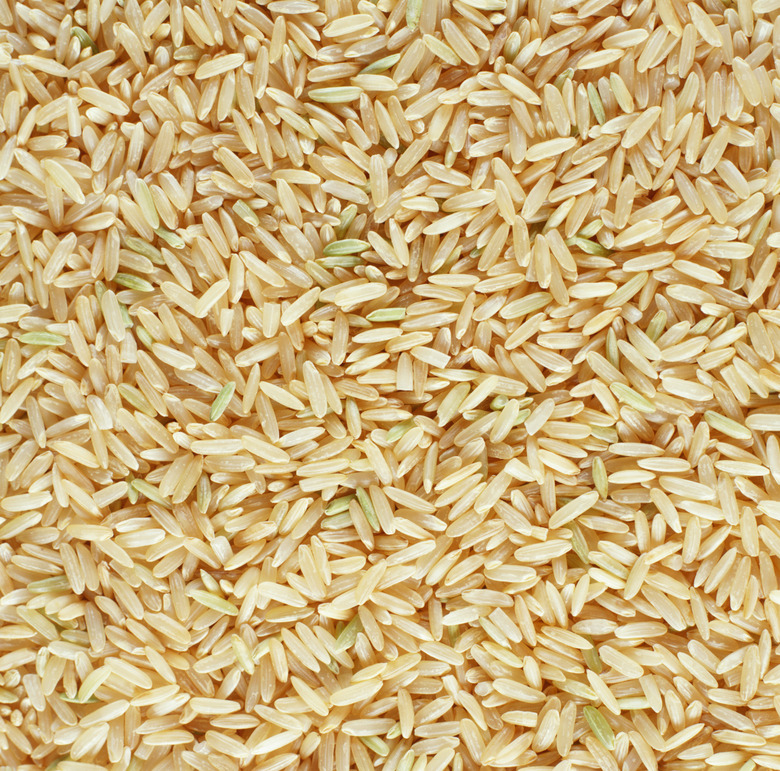Rice Experiments
Various forms of rice give you the chance to see science in action. Long grain rice works well for rice experiments, but you can add different variables to your science projects by trying the experiments with different types of rice, such as arborio, Madagascar pink rice, pearl rice or even rice that's puffed.
Sticky Rice Experiment
Sticky Rice Experiment
Filling a dry water bottle with uncooked rice offers insight about the principles of friction and force. Fill two water bottles with uncooked rice. Set one bottle aside. Tap the sides of the second bottle or tamp down the rice using a dowel to help eliminate the air between the grains of rice, and pack the second bottle with more rice until no more fits in. Place a wooden chopstick in each bottle so 25 percent of the stick remains exposed. Then try to lift the chopstick out of the bottles of rice. You'll find that the chopstick lifts right out of the bottle of loose rice. When you try to lift the chopstick out of the bottle with packed rice, the bottle will lift off the table, as if the rice is stuck to the stick.
Why the Rice Seems to Stick
Why the Rice Seems to Stick
If you placed a chopstick in a bottle of water, you would notice that the water rises because of the mass and weight of the stick. Since the uncooked rice isn't in liquid form, it can't move up the sides or neck of the bottle. Instead, the rice grains press against each other and the sides of the bottle when you introduce the chopstick, which increases the friction between the objects, according to the Steve Spangler Science website. Consequently, the force of the friction created becomes greater than the weight of the water bottle and rice, making it simple to pick up a bottle full of rice with a chopstick.
Magnetic Rice Experiment
Magnetic Rice Experiment
Cover the bottom of a shallow bowl with puffed rice, which you can find in the cereal aisle of a supermarket. Then vigorously rub a small plastic spoon with something made from 100 percent wool for 20 seconds. Immediately hold the spoon a couple of inches over the puffed rice. The rice will jump to the spoon, like bits of metal to a strong magnet, before it falls back down to the dish or shoots off the spoon. See if rubbing the spoon for longer or shorter periods attracts the rice better or makes the rice stick to the spoon for a longer time. You can also try the experiment on different forms of rice to see if they behave in the same manner.
Why the Rice Travels to the Spoon
Why the Rice Travels to the Spoon
When you rub the plastic spoon with wool, it temporarily becomes negatively charged because it attracts electrons from the cloth. As you hold the spoon over the puffed rice, the electrons pass from the spoon to the puffed rice as induction charges them. As the rice sticks to the spoon, the objects will have the same negative charge. When it comes to electromagnetism, opposites attract. Since two equal charges repel each other, the puffed rice flies from the spoon or falls back down to the dish because it lost its charge.
Cite This Article
MLA
Richards-Gustafson, Flora. "Rice Experiments" sciencing.com, https://www.sciencing.com/rice-experiments-15108/. 24 April 2017.
APA
Richards-Gustafson, Flora. (2017, April 24). Rice Experiments. sciencing.com. Retrieved from https://www.sciencing.com/rice-experiments-15108/
Chicago
Richards-Gustafson, Flora. Rice Experiments last modified August 30, 2022. https://www.sciencing.com/rice-experiments-15108/
